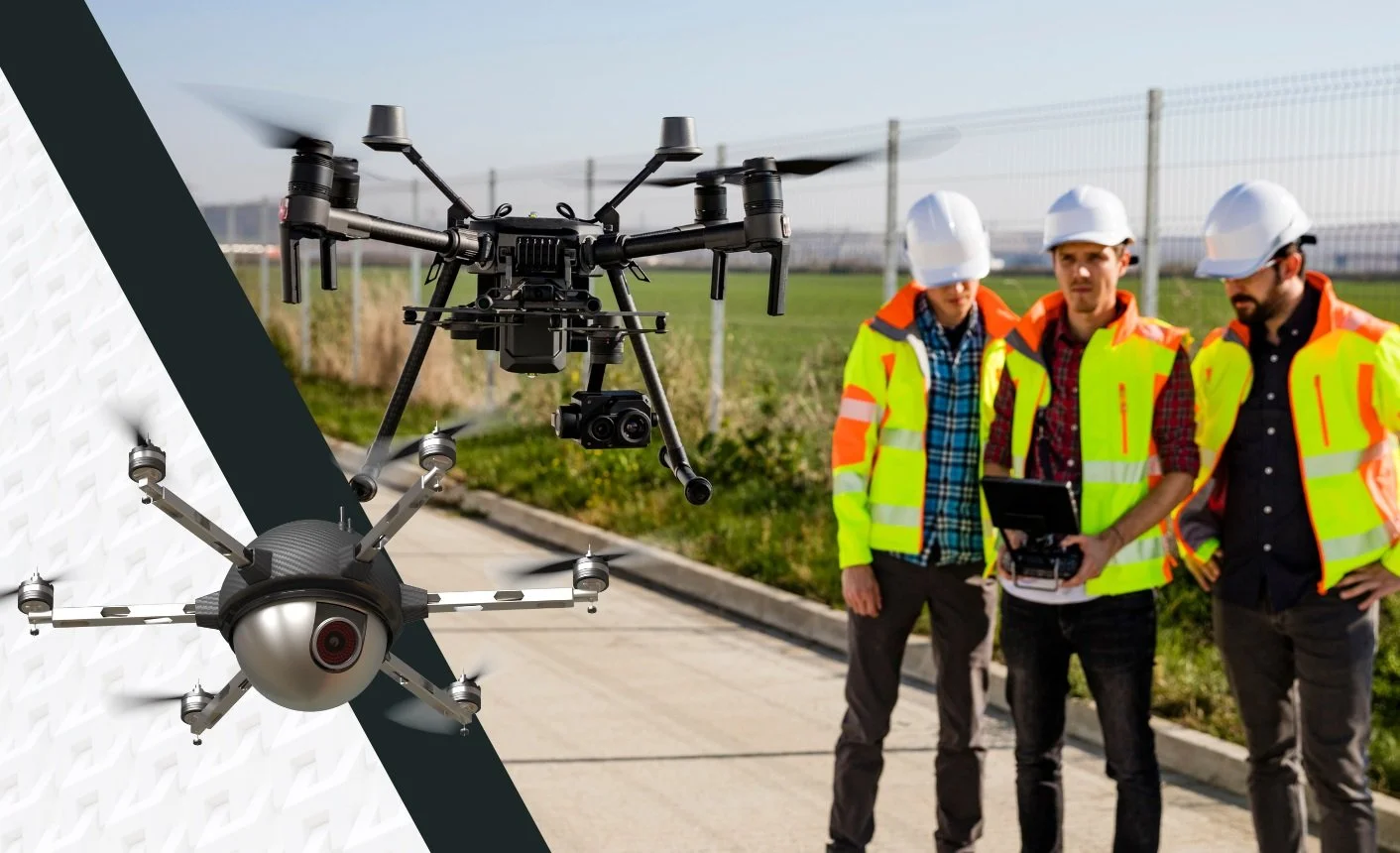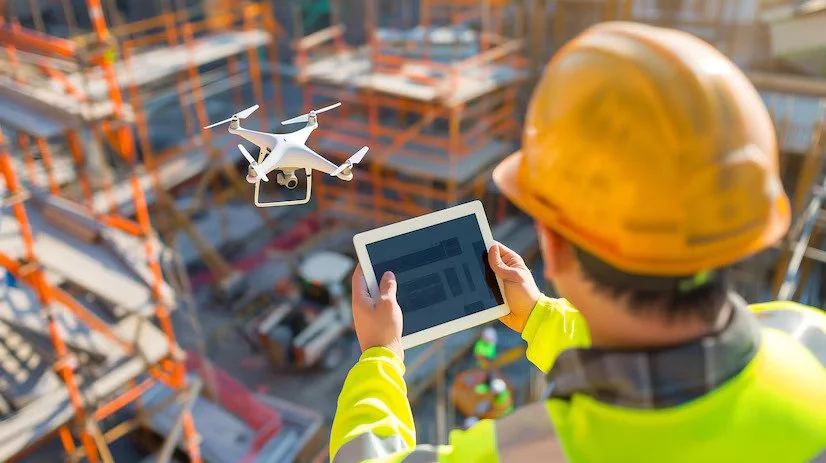Drones for Construction Inspection: Smarter Monitoring for Modern Projects
Sometimes you need to step back to see the bigger picture—or, in construction's case, fly up. More and more clients in construction, warehousing, and industrial work are switching to drone inspections because they get better data, faster reports, and way safer job sites. Here at Exactus Engineering, we're combining drone tech with solid structural know-how to give you insights that old-school inspections just can't deliver.
Reaching What Scaffolding Can't
Let's be honest—structural assessments of elevated elements have always been challenging for your projects. Getting proper access to assess beam connections, column integrity, and roof structural members requires expensive scaffolding or boom lifts that can cost more than the inspection itself.
A typical structural assessment requiring scaffolding? You're talking a full day for setup, limited time to evaluate connections, then another day for removal. Meanwhile, your project timeline's on hold. With drones, we're completing structural surveys much faster, capturing connection details without putting anyone at risk.
Falls cause about a third of construction deaths, often during structural inspections. When we can assess your beam deflections and connection integrity from the ground while getting superior visual access to critical details, that's smart engineering for your project.
Visual Clarity That Drives Better Decisions
Here's what separates today's structural drone work—we're talking cameras that can zoom in on weld details, count bolt patterns, and spot connection problems in your facility that you'd never catch from ground level. The resolution is better than what most people get during traditional site visits.
We can actually watch how your beams behave under load, see if joints are moving during temperature swings, and document how your structure responds to different conditions. The 3D mapping capability means one drone flight gives us as-built drawings accurate to a quarter-inch. Perfect for updating your as-built drawings or figuring out actual load capacity. Instead of relying on "it looked fine last time," you've got actual measurements we can use in structural calculations and inspection protocols.
Thermal and Sensor Payloads Unlock Hidden Issues
The thermal cameras show us things invisible otherwise, like when your connections are getting too hot from stress, or where moisture is sneaking into assemblies and setting up future corrosion problems in your building.
We've seen thermal signatures of overloaded connections before any physical signs showed up. Those hot spots at connections? That's your early warning that something's not distributing the load properly. Finding moisture in your structural assemblies before the steel starts rusting? That saves you major structural repairs.
Real-time strain readings, deflection measurements, vibration analysis – basically everything we need to know if your structure's behaving as designed. When we integrate load cells and displacement sensors with the drone platform, we're getting structural health data that feeds right into our analysis software.
Reducing Risk Without Slowing Down Projects
Here's the thing about structural inspections – they usually mean everything stops. Can't pour concrete while someone's checking formwork. Steel crews can't work while someone's looking at connections. Our drone monitoring? Your work keeps going while we're getting the structural data we need.
Instead of coordinating site shutdowns weeks ahead just to check connections, we can inspect your new structural work the same day it's installed. Something doesn't look right with that beam deflection? You don't need to wait for the next scheduled inspection window.
Closing Gaps in Structural Reporting
Traditional structural inspection reports? Let's be honest, they're often vague. "Connection appears adequate," "minor deflection observed" – try making decisions about your building with that. Our drone reports give you actual measurements, documented deflection values, and precise connection details—similar to comprehensive structural engineer reports, with the accuracy you need for real engineering decisions.
Instead of waiting days or weeks for field observations, you're getting measured structural data in hours. Need preliminary deflection readings? You can have those same-day instead of holding up your project while waiting for a field report.
Time-stamped records show exactly how your structural elements are performing over time – the kind of data you need for long-term facility assessments and code compliance documentation.
Where AI Is Taking Inspection Next
We've got AI that can scan drone footage and automatically identify structural defects in your building – crack propagation in concrete, corrosion patterns in steel, connection distress, deflection beyond acceptable limits. The computer handles initial screening and flags what needs our engineering attention.
These systems learn structural failure patterns. Every assessment teaches them more about what trouble looks like in buildings like yours. We've seen it catch hairline cracks and subtle deflections that experienced people missed on first review.
What's coming next is predictive structural analysis. The system monitors how your members deflect under load, where stress concentrations develop, how connections respond over time. Then it predicts structural issues before they become critical.
Some projects already run automated structural monitoring. Drones follow predetermined routes, document conditions consistently, and alert our engineers when measured deflections or observed conditions exceed design parameters.
What This Means for Our Clients
You didn't get into your business to worry about structural inspections. You want to focus on running your operation and keeping projects moving. Having proper structural monitoring means we're catching problems before they turn into failures that shut down your operation.
The payoff is clear. Spotting overloaded members before they fail? Catching connection problems before they compromise your structural system? That's proactive engineering that prevents catastrophic failures that shut down operations and cost serious money.
At Exactus Engineering, we don't just fly drones and hand you a memory card. We interpret the data and give you clear, actionable answers that help you make smart decisions about your structural assets. Our combination of cutting-edge drone technology and deep structural engineering expertise means you gain insights that truly matter for your bottom line.
Ready to see how drone inspection technology can benefit your next project? Speak to an Exactus engineer today about adding drone inspection to your construction monitoring program.




